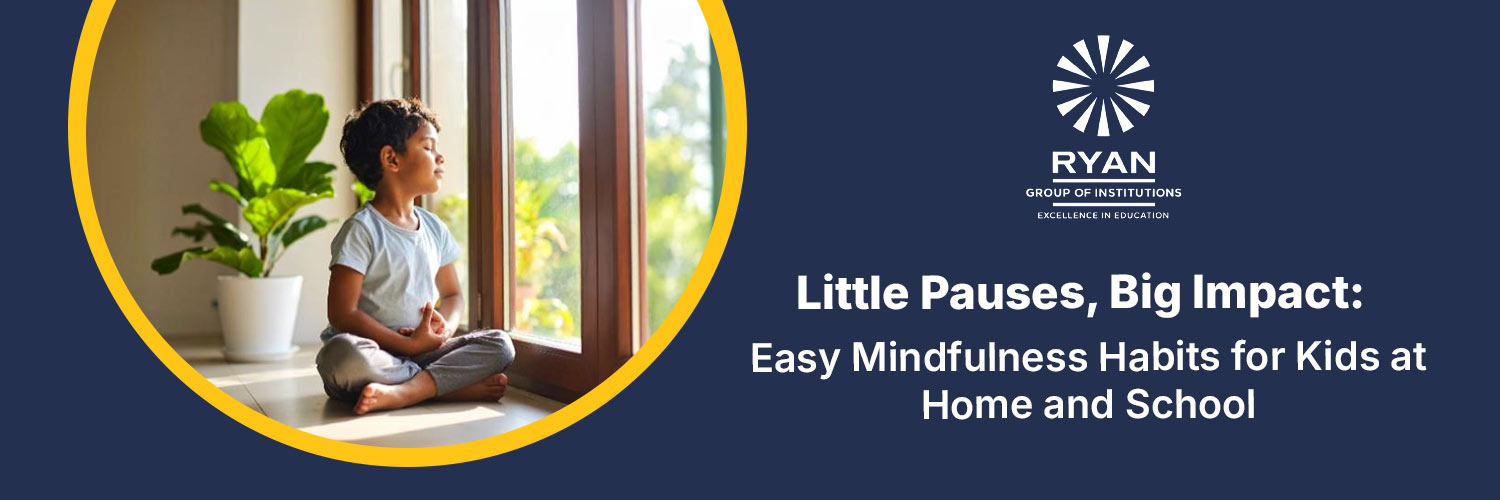Between school, screen time, extracurriculars, and constant stimulation, children today rarely get the space to slow down. As their days fill up, their minds do too. What they often need is not more activity, but more stillness. Not a big change, just a few mindful pauses. Moments where they can take a breath, feel grounded, and reset emotionally.
Mindfulness is not about long meditations or rigid routines. It is about brief, intentional breaks that bring calm and clarity into everyday life. And when these small pauses are woven into your child’s routine, they can create lasting emotional and mental benefits.
Why mindfulness matters for kids
Kids are naturally curious and expressive. But they are also sensitive to stress, overstimulation, and changes in their environment. Mindfulness helps children:
- Regulate emotions and feel more in control
- Improve focus and manage distractions
- Develop empathy and emotional awareness
- Reduce anxiety and improve sleep quality
Think of these mindful moments as mental breathers. Just like the body needs rest, the mind benefits from stillness in short, regular intervals.
Simple ways to build mindfulness into your child’s routine
Mindfulness can feel natural when introduced gently. Here are small, age-appropriate ways to build mindful moments into a child’s daily rhythm.
1. Morning grounding before school
Before the day begins, invite your child to sit for a moment and take three deep breaths with their hand on their chest. This tiny ritual can create calm and help them enter the school day feeling centered.
2. Sensory breaks during study time
Every 30 to 40 minutes, let your child step away from homework for a quick sensory reset. They could stretch, bounce a soft ball, or look outside and name what they see. It helps the brain shift gears and return with fresh focus.
3. One-task moments during chores
Ask your child to slow down during daily tasks like brushing teeth or tying shoelaces. Encourage them to notice textures, smells, and sounds. These small moments of awareness improve concentration and presence.
4. Mindful snacking
Instead of eating in a rush, help your child eat mindfully. Let them explore the taste, texture, and smell of their snacks. Chewing slowly and noticing the experience helps them connect with their body and hunger cues.
5. Emotion check-ins after school
Before jumping into homework, take a moment to ask how they feel. Try fun prompts like “what color was your day?” or “what part of school made you smile or frown?” This helps them name emotions and feel heard.
6. Bedtime body scan
As they lie in bed, guide them to notice each part of their body, from toes to head. It can be as simple as “Can you feel your fingers?” or “Are your shoulders heavy or light?” This practice helps relax the body and calm the mind before sleep.
Tips to make it work every day
- Keep it light and playful. Mindfulness should feel comforting, not like a task
- Join them. Kids mimic what they see. Take deep breaths together or do a quick body scan side by side
- Use visual cues. A sticker near their study table or bed can be a gentle reminder to pause
- Celebrate small wins. Even a thirty-second mindful pause deserves a “well done.”
A gentle pause can go a long way
At Ryan Group of Schools, we believe education is not just about books and exams. It’s about helping children grow into emotionally aware, confident individuals. Encouraging your child to take mindful moments during the day isn’t about doing it perfectly. It’s about showing them they have the power to slow down when things feel overwhelming. Over time, these simple pauses, built into classroom routines, playtime, or quiet reflection, help create a stronger foundation for focus, resilience, and well-being.




